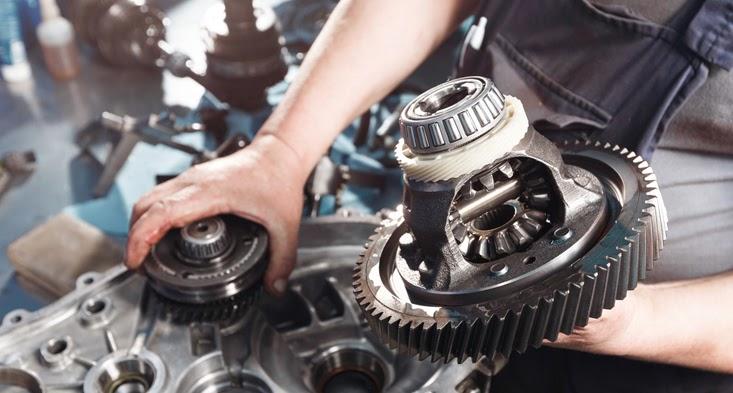While you do not need to know your car’s ins and outs to provide it with proper maintenance, every car owner gets acquainted with the most important parts of a car and their functions.
In this article, we’re going to take an in-depth look at the most important automobile components and parts that every car owner must know, briefly explain how they work, and discuss their importance.
Even if you are not an absolute gearhead but only a regular car owner, you should be familiar with this selected list of the most important and basic car parts and their functions.
This guide and the many links to related comprehensive articles will help you take good care of your beloved vehicle in your garage.
Contents
Basic Parts of a Car: Most Important Components
Every component in a vehicle has significance, albeit some might be more important than others. Modern-day vehicles have become a great deal more complex and have many more parts than their predecessors.
Although there are many complex parts, some are a mainstay — common and essential for every vehicle. Below are the most basic and at the same time important parts of a car.
Understanding how they work and how to maintain them in good shape will mean smoother and hassle-free rides for you as the owner.
Engine
We would start with the engine, one of the most important component of an automobile by all accords.
The performance of a vehicle depends heavily on its engine. Furthermore, the many components of the engine and the many more related parts are highly prone to wear, therefore the engine tops the list of parts of a car you should get acquainted with.
This complex and delicate powerhouse is made of blocks, heads, pistons, and valves. Modern automotive engines are also called “internal combustion engines”.
This is because the engine generates power for your car to run by creating combustion inside its chamber. The input for such combustion is a mixture of fuel and air of a precise ratio for optimal results.
Different types of fuels are used by engines including:
- Diesel
- Ethanol
- Gasoline
- Electricity
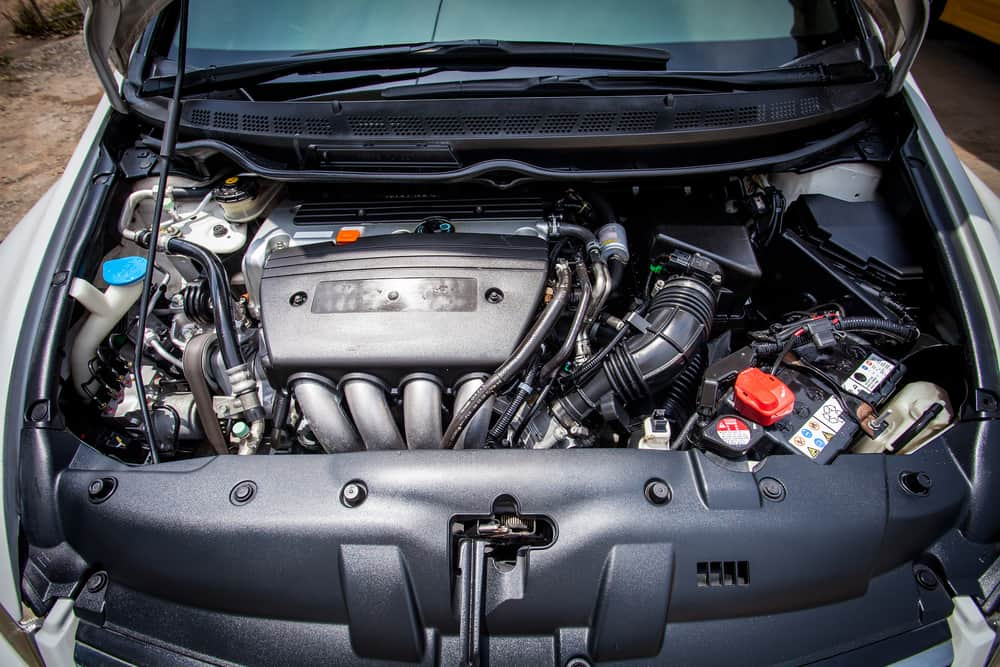
How an engine works
The engine block is home to engine cylinders, inside of which the pistons move up and down, creating energy. The more cylinders an engine has, the more powerful it is. Engines usually have four, six, or eight cylinders.
In a four-stroke engine, during the intake stroke, the intake valve opens. The piston moves downward and moves the crankshaft with it, creating a suction or “vacuum” that sucks in air and fuel, letting them enter the combustion chamber.
The valve then closes. How much of this mixture is allowed to enter is controlled by the butterfly throttle, a plate that rotates, in the intake valve.
When the piston reaches the top of its compression stroke, the mixture is compressed, while the spark plug ignites the compressed mixture and creates combustion, sending the piston down on its power stroke, which turns the crankshaft.
Ultimately that crankshaft combined with the transmission turns your wheels and sends you lickity split on your way to your destination.
When the piston reaches the bottom of the stroke, the exhaust valve opens, pushing the exhaust gasses out of the cylinder.
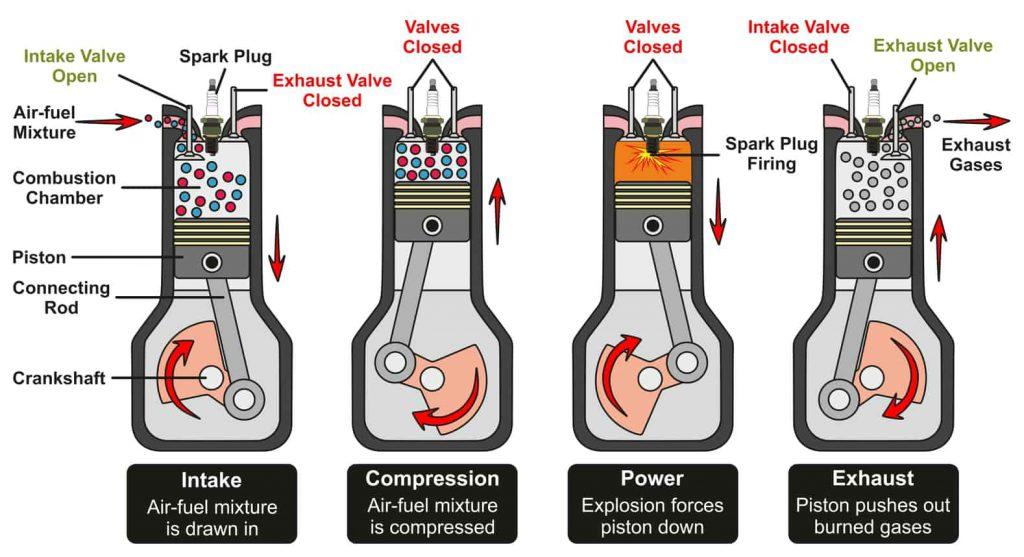
Engines require regular oil changes to stay lubricated and prevent wear and tear.
READ MORE: What’s The Most Misunderstood Thing About Car Engines?
Gear Box (Transmission)
The Gear Box, or transmission, also referred to as a car’s Power Train, comes in at a close second to the engine. This part is what commonly needs attention when vehicles fail. The gearbox, when restored, can give new life to even the oldest of vehicles.
The transmission is what contains the different gears that a car needs to shift into depending on speed. These gears transfer the engine’s power to the wheels of the vehicle.
A transmission is available in two types: the manual and the automatic models.
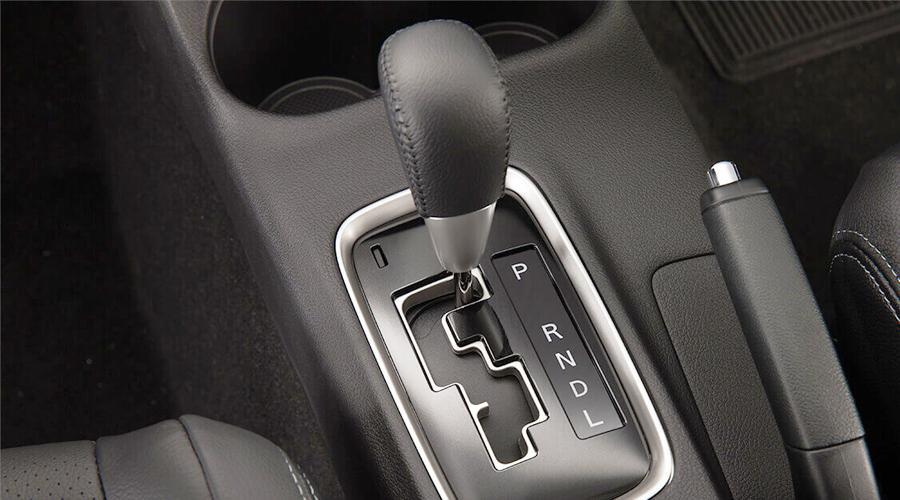
With manual transmissions, the driver selects gears through the use of a shift lever and clutch pedal. Meanwhile, automatic transmissions can shift through forward gears by themselves, and the driver only needs to select between drive (forward) and reverse.
Obviously, an automatic transmission is more convenient and is more popular, however, it doesn’t last as long. In addition, some performance enthusiasts argue that you give up control when you opt for an automatic.
Interestingly, many seasoned drivers prefer manual transmission as being more fun to drive.
To learn more helpful DIY maintenance tips for your car’s transmission as well as common problems and how to fix them, consult the comprehensive guides below.
READ MORE
- The Top Five Car Transmission Maintenance Tips
- When To Shift Gears To Expect An Impressive Fuel Economy
- Why Is There Only One Gear In Electric Vehicles?
Brakes
While the parts of a car that make it move are vital, so are the components that make it stop. They must work side by side.
Next off the list of important car parts, and their functions is the brake system, the failure of which can lead to serious, even fatal accidents. Have you ever wondered how a light press on the brake pedal can slow down or stop a gigantic rolling machine?
When you press down on the brake pedal, a hydraulic fluid is transmitted through the steel pipes to the wheels of the vehicles.
The brakes use the power of hydraulic fluid to transfer the force the driver applies to the brake pedal to a clamping force that slows the vehicle’s wheels.
A manual braking system requires a driver’s intervention for stopping. A later invention is the sensor braking system, which can sense the necessity of braking and take action.
How the braking system works
The braking system of a car consists of brake rotors, brake calipers and brake pads. Brake rotors are metal discs made from steel and iron. They connect to the axles, the component that turns the wheels.
The brake calipers are clam-like parts that come into contact with both sides of the brake rotors to create friction when you brake.
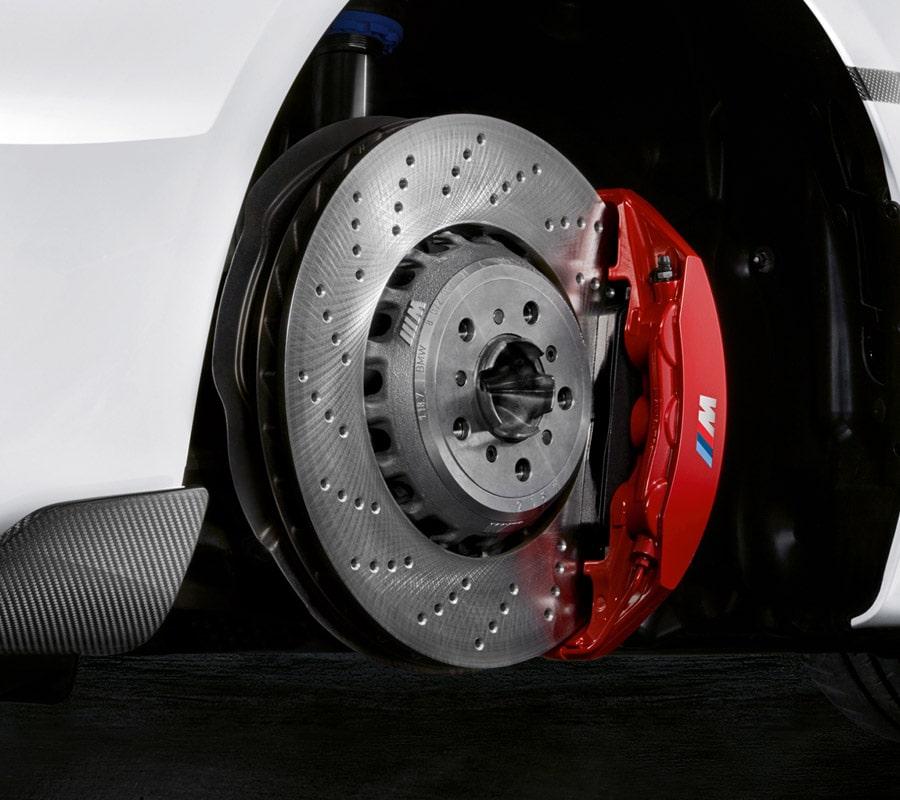
When you press the brake pedal, the brake calipers clamp on both sides of the brake rotors to slow down the wheels to a stop.
To increase braking efficiency and minimize wear and tear on the expensive braking system, brake calipers are equipped with pads. These sacrificial pads squeeze on both sides of each brake rotor to slow it down.
Whether you have a manual or sensor braking system, it is very important to maintain and regularly replace the brake parts, which can crack through a lot of beating.
Common issues with brakes can be due to rusted calipers that can lock in place, cracked pads, air in your brake lines, or water damage.
To learn more about different types of brakes, as well as a handy maintenance guide for the many parts of the braking system, refer to the guides below.
Braking system maintenance
- The Easy Way To Do A Brake Booster Replacement
- How to change brake calipers
- How to adjust drum brakes
- How To Clean Drum Brakes
- How To Bleed Brakes For Cars
READ MORE
- Common Brake Problems In Cars That Can TROUBLE You
- Jake Brake vs. Exhaust Brake: Which Is Better?
- Foot Brake vs. HandBrake: What Is The Difference
- The Steps To Follow In The Event Of A Brake Failure
Steering system
You surely know that when you turn the steering wheel in your car, the wheels turn. However, what happens when you turn your car is not as simple as you might think.
The two most common types of car steering systems are rack-and-pinion and recirculating-ball steering.
While rack-and-pinion steering is most common on passenger cars, small trucks, and SUVs, recirculating-ball steering is more commonly used on SUVs and larger trucks.
How steering works
You might be surprised to learn that when you turn your car, your front wheels are not pointing in the same direction.
For a car to turn smoothly, each wheel must follow a different circle. The inside wheel has to follow a circle with a smaller radius, or in other words, it is making a tighter turn than the outside wheel.
The steering system ensures that the inside wheel turns more than the outside wheel.
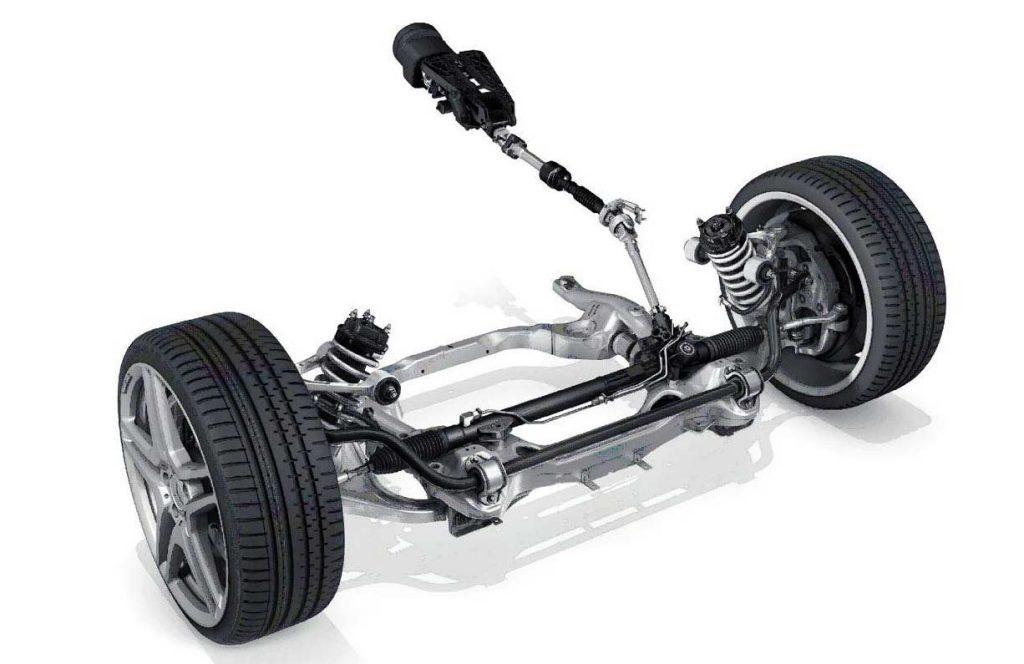
Steering ratio
A measure you should know is the steering ratio. The steering ratio is the ratio of how far you turn the steering wheel to how far the wheels turn.
For instance, if one complete revolution (360 degrees) of the steering wheel results in the wheels of the car turning 30 degrees, then the steering ratio is 360 divided by 30 or 12:1.
Generally, sports cars have lower steering ratios. The lower ratio gives the steering a quicker response, so you don’t have to turn the steering wheel as much to get the wheels to turn a given distance.
In addition, smaller cars are light enough that even with the lower ratio, you won’t need to steer that hard to turn the car.
READ MORE
Maintenance tips
Suspension
After talking about steering, we must follow with suspension in this list of basic car parts. The role of a car suspension is enormous.
It maximizes the friction between the tires and the road surface, thus providing steering stability and ensuring a smoother, more comfortable ride.
There is not much requirement for car suspensions over the flat surface. However, on the rough surface, you might not be able to drive or handle the vehicle properly.
When the car’s wheel runs over a bump on the road, it will move up and down, resulting in the car completely losing contact with the road surface. The suspension system deals with these shocks by absorbing the vertical force of the wheel.
With such vertical force minimized, the wheels continue to roll with horizontal force, allowing the car’s frame and body to ride undisturbed while the wheels follow bumps in the road.
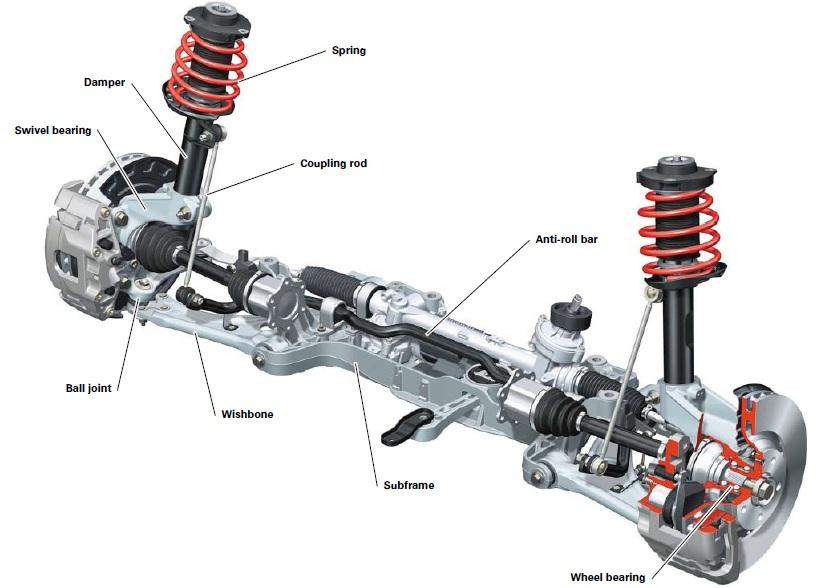
READ MORE
- How Does Suspension Work In A Car?
- Lowering Suspension- Pros And Cons
- 5 Suspension Mods You Should NEVER Do To Your Car
Chassis
The chassis is the frame of the vehicle which houses and supports everything else of a car. If the engine is the heart of the vehicle, the chassis is the skeleton.
The chassis keeps the vehicle stiff and tensile. It ensures low vibration and noise in the entire vehicle.
Car chassis are usually made of light steel or other sturdy materials like aluminum. Most vehicles on the roads these days feature steel-plated chassis as it ensures strength and durability.
READ MORE
- Understanding The Automotive Car Chassis System
- Why Are Modern Cars Safer Than Older Ones Even Without A Metal Body?
- Body On Frame Vs Unibody Construction: Key Differences
Basic Parts of a Car: Cooling System
Although gas-powered engines have improved a lot over time, they are still not very efficient at converting chemical energy into mechanical power.
About 70% of the energy in gasoline is converted into heat, which means the engine and other components under the hood are subject to overheating.
Without a cooling system, overheating will quickly lead to malfunction and complete failure.
The cooling system takes care of this excessive heat. On a car running down the highway, the cooling system dissipates enough heat to heat two average-sized houses.
A highlight here is that its job is not simply cooling. The engine in your car runs best at a fairly high temperature. When the engine is cold, components wear out faster, and the engine is less efficient and emits more pollution.
So another important job of the cooling system is to allow the engine to heat up as quickly as possible, and then to keep the engine at a constant temperature that is optimal and safe.
READ MORE
There are two types of car cooling systems: liquid-cooled and air-cooled.
Liquid Cooling
A liquid-cooled system circulates a fluid, called a coolant, through pipes and passageways in the engine. As the coolant passes through the hot engine, it absorbs heat and thus cools down the engine.
After the fluid leaves the engine, it passes through the radiator, or a heat exchanger, which transfers the coolant’s heat to the air blowing through the radiator.
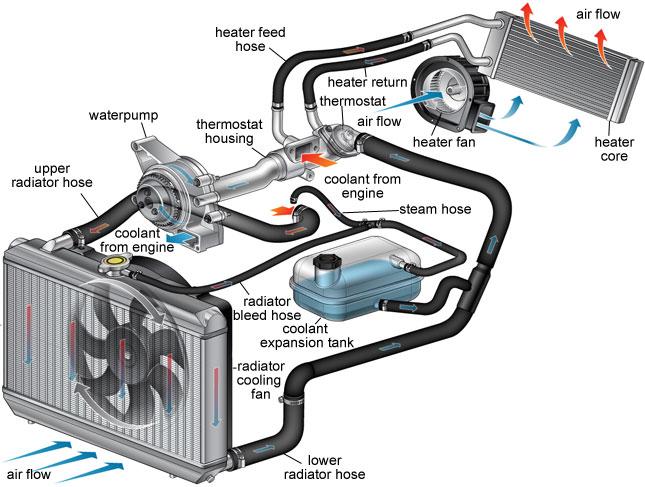
Air Cooling
Some older cars, and very few modern cars, are air-cooled. In this type of cooling system, the engine block is covered in aluminum fins that conduct the heat away from the cylinder. A powerful fan blows over these fins, getting rid of the heat.
READ MORE
How A Cooling System Works
Coolant
The coolant has to have a very low freezing point and a high boiling point, and it has to have the capacity to hold a lot of heat.
Coolants consist of ethylene glycol and water, as ethylene glycol improves the boiling and freezing points of water significantly.
In addition, the cooling system uses pressure to further raise the boiling point of the coolant.
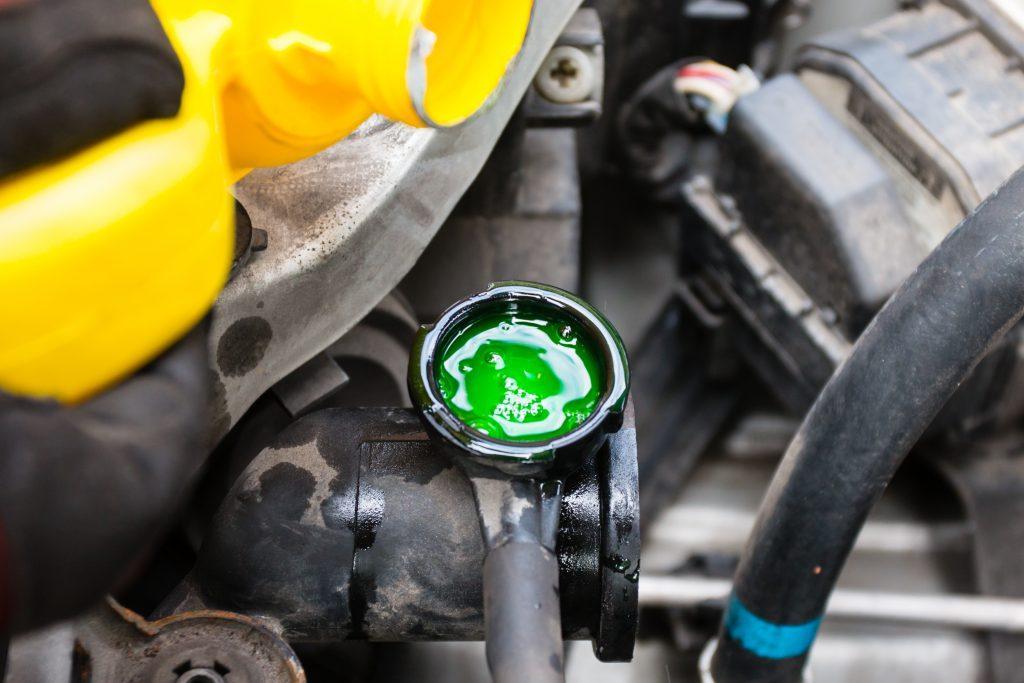
READ MORE
- What To Do When Your Car Is Losing Coolant But No Leak
- How Often To Change Engine Coolant
- What Happens When Your Car Runs Out Of Coolant?
Radiator
A radiator is a heat exchanger. It transfers heat from the hot coolant that crosses it to the air that the fan blows through it. For maintenance tips for a radiator’s parts that need your attention, refer to the guide below.
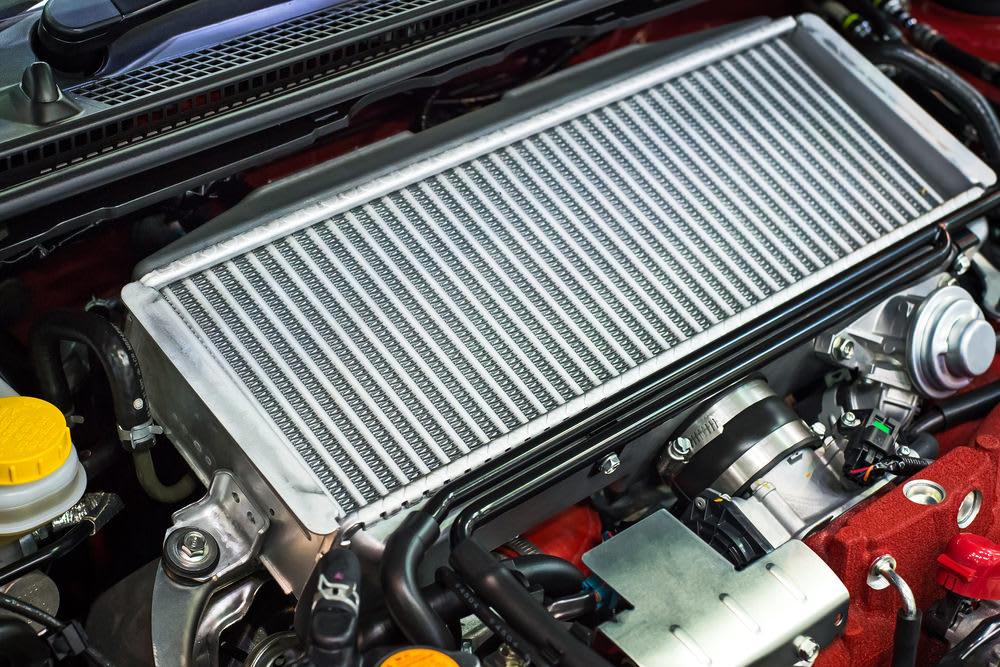
READ MORE
- The Probable Reasons Behind Loss Of Radiator Fluid
- How To Replace A Radiator Hose
- Function And Symptoms Of A Bad Radiator Cap
Thermostat
The thermostat’s main job is to allow the engine to heat up quickly, and then to keep the engine at a constant temperature, which is essential to the engine’s performance and lifespan.
It does this by regulating the amount of water that goes through the radiator.
READ MORE
Fan
Like the thermostat, the cooling fan has to be controlled so that it allows the engine to maintain a constant temperature. The fans are controlled either with a thermostatic switch or by the engine computer.
The fan is set to turn on when the temperature of the coolant goes above a set point. They turn off when the temperature drops below this point.
READ MORE
- How To Test Radiator Fan With Multimeter
- Car Radiator Heating Up? 5 Radiator Fan Problems That You Need To Know
Basic Car Parts: Charging System
The charging system includes the battery and the alternator, which serve to start the engine. Many starting problems, such as slow start, no start, or slow cranking are caused by a failing battery or alternator.
Battery
The battery is a critical component that gets your car going. A car’s rechargeable battery supplies electrical current to a motor vehicle. Its main purpose is to feed the starter, which starts the engine.
Its health affects whether your vehicle can run smoothly or at all. Therefore, to reduce your chances of failure, it is important to test a car battery with a multimeter regularly, at least twice a year.
Testing the battery also helps you determine quickly whether slow-starting is the result of a failed battery or issues elsewhere.
A battery is fully charged when it holds 12.6 volts or above. When a battery goes down to 12.2 it is only 50% charged, and when it is below 12 volts the battery is “dead” and needs to be replaced.
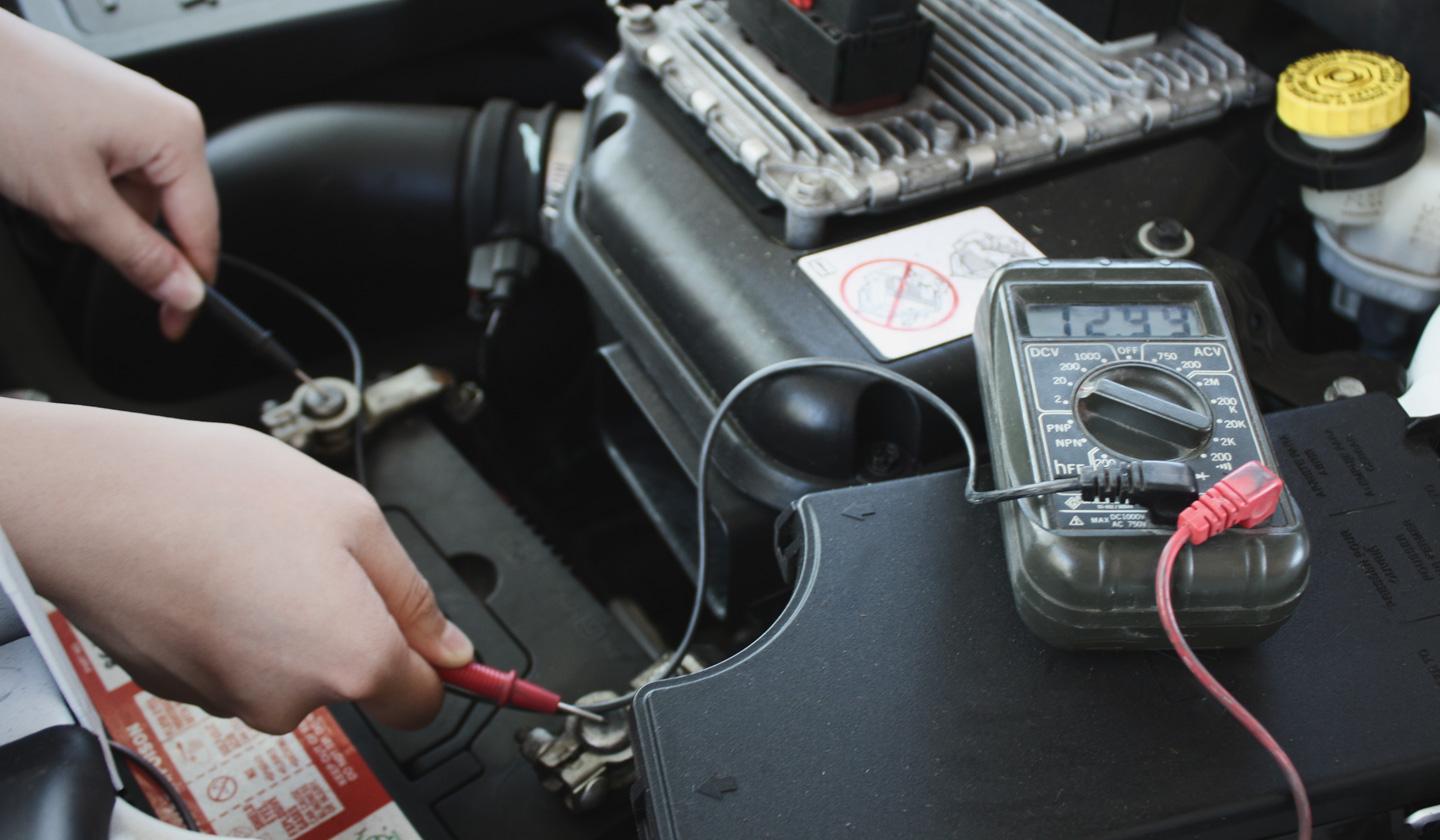
If you have trouble starting your car or encounter some other telltale signs, chances are your battery is failing. Do not leave it only when the car’s starting to show signs of weakness.
In the event you need to jump-start your vehicle, you need to connect the red clamp of the jumper cable to the (+) symbol and the black clamp to the (-) symbol.
READ MORE
- How To Test A Car Battery With A Multimeter
- Lead Acid Battery Vs. Lithium Ion: The Detailed Comparison
- Car Battery Or Alternator: Which One Is The Culprit Behind A Dead Car?
- How To Remove A Car Battery
- Why Battery Light Is On But Alternator Is Charging And What To Do?
- Can You Drive A Hybrid Without The Battery?
Alternator
The alternator produces electricity from the car’s mechanical energy. It uses this electrical energy to run various electrical parts such as lights, and conditioning units, … and to charge the battery.
When you hear someone talking about “charging-system problems”, they are talking about the alternator.
The alternator receives the engine’s mechanical energy with the use of an alternator belt or serpentine belt which wraps around a pulley or multiple pulleys.
The pulley is connected to the alternator. The other end of the pulley wraps around the engine’s crankshaft. Therefore, the crankshaft and alternator can rotate together by the alternator pulley.
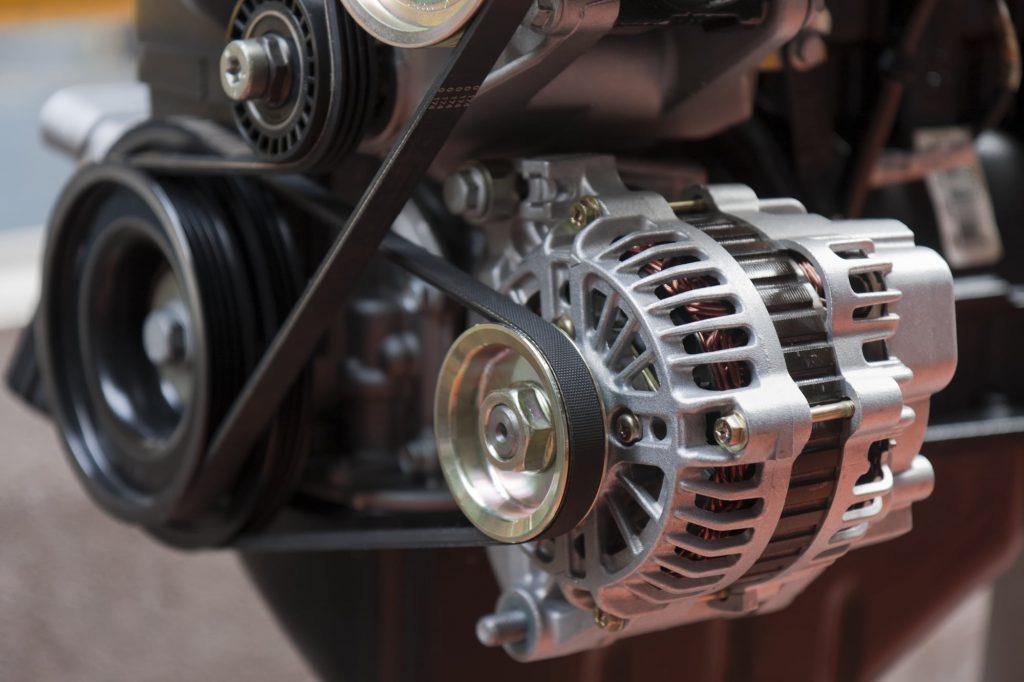
If the alternator is working well, the lifespan of your car’s battery is maximized. If it overcharges or undercharges, the battery’s life will be shortened.
Will a car run with a bad alternator?
Technically the car can still run but only for a short while, since it is strictly only using the power stored in the battery.
A bunch of other parts of a car consume power as well: headlights, brake lights, interior lights, engine control unit (ECU), and more.
So in short, the answer is no. Because a car with weak electrical power doesn’t have enough “food” to feed many necessary components to function to get it running.
If this alternator problem manifests on the road, especially during a long drive, your safety goes out the window. You should test the alternator and the battery at regular intervals, say every 4-6 months.
READ MORE
- How To Test An Alternator: The Complete Guide
- How To Troubleshoot Alternator And Charging System Problems
- How To Jumpstart A Car With A Bad Alternator
Basic Car Parts: Electrical System
Ignition Systems
A car’s ignition system is the key part of a car that maximizes the engine’s power and minimizes its pollution.
The ignition system has to work in perfect harmony with the rest of the engine. The goal is to ignite the fuel at a precise time for optimal combustion, which is when the pressure in the cylinder during the power stroke is maximized.
To make the best use of the fuel, the ignition should occur before the piston reaches the top of the compression stroke, so by the time the piston starts down into its power stroke, the pressure is at the highest level.
When you turn the key once, you power up the battery, allowing you to run electrical parts like the stereo. When you turn the key twice, you connect the spark plugs in the engine to the battery and the ignition coil.

If the ignition system fires at the wrong time, the engine will not produce enough power. Reduced engine efficiency directly affects mileage. The engine also produces more emissions in such a case.
The ignition system consists of:
- A spark plug, which ignites the air and fuel mixture,
- An ignition coil: an induction coil that transforms the battery’s low voltage to the thousands of volts needed to create an electric spark in the spark plugs to ignite the fuel,
- A distributor: which distributes the high voltage from the coil to the correct cylinder. This is done by the cap and rotor.
More on the ignition system and maintenance tips for its components below.
READ MORE:
- The Three Types Of Ignition System And How They Work
- Key Stuck In Ignition- Causes And Solutions You Must Know
- How To Test Ignition Switch – Two Different Methods
Maintenance of the ignition components:
- Bad Distributor Cap Symptoms
- Top 5 Reasons Behind No Spark From Distributor
- 7 Common Bad Ignition Coil Symptoms
Computers
You might be surprised to find out that you’re essentially driving around in a giant computer. Today’s cars might have as many as 50 microprocessors on them.
First and foremost is the engine control unit (ECU), the most powerful automotive computer.
The ECU ensures the lowest emissions, and best mileage, and generally controls a multitude of car parts and their functions by gathering data from dozens of different sensors.
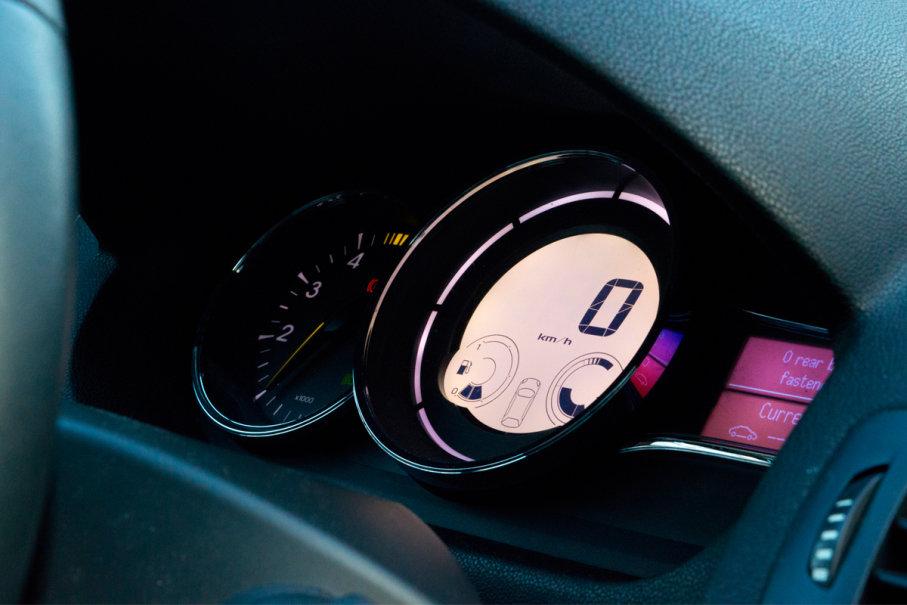
With this data, it performs millions of calculations constantly to decide how each part should perform and to make adjustments promptly when there is a small deviation in the system.
Once there is a problem with any part of the engine, such compensation from the ECU will result in noticeable symptoms.
For instance, when you accidentally refill your car with oxidized gasoline, which can naturally happen in storage, the ECU will read this as a “lean burn” or too much air conditioning.
A lean burn is not optimal for the engine, as a combustion engine strictly requires a fixed ratio of fuel and air to operate.
In attempting to adjust, the ECU will inject gasoline to rebalance the air-fuel ratio. By injecting more of this bad gasoline, the engine will repeat this cycle of lean burning, resulting in engine surging and stalling.

